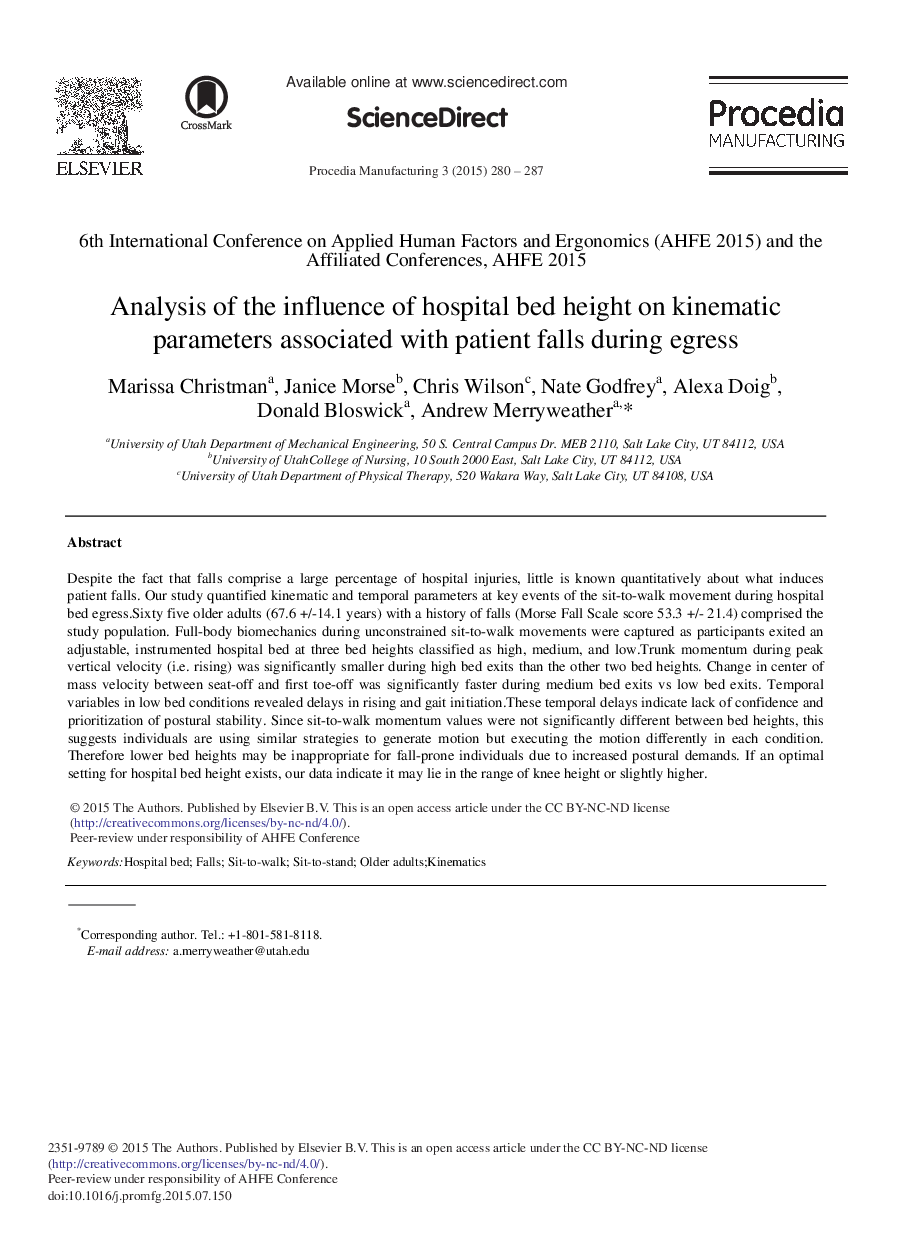| Article ID | Journal | Published Year | Pages | File Type |
|---|---|---|---|---|
| 1143798 | Procedia Manufacturing | 2015 | 8 Pages |
Despite the fact that falls comprise a large percentage of hospital injuries, little is known quantitatively about what induces patient falls. Our study quantified kinematic and temporal parameters at key events of the sit-to-walk movement during hospital bed egress. Sixty five older adults (67.6 +/-14.1 years) with a history of falls (Morse Fall Scale score 53.3 +/- 21.4) comprised the study population. Full-body biomechanics during unconstrained sit-to-walk movements were captured as participants exited an adjustable, instrumented hospital bed at three bed heights classified as high, medium, and low. Trunk momentum during peak vertical velocity (i.e. rising) was significantly smaller during high bed exits than the other two bed heights. Change in center of mass velocity between seat-off and first toe-off was significantly faster during medium bed exits vs low bed exits. Temporal variables in low bed conditions revealed delays in rising and gait initiation. These temporal delays indicate lack of confidence and prioritization of postural stability. Since sit-to-walk momentum values were not significantly different between bed heights, this suggests individuals are using similar strategies to generate motion but executing the motion differently in each condition. Therefore lower bed heights may be inappropriate for fall-prone individuals due to increased postural demands. If an optimal setting for hospital bed height exists, our data indicate it may lie in the range of knee height or slightly higher.
